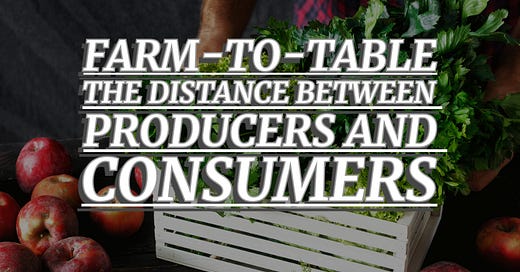Farm-To-Table: The Distance Between Producers and Consumers
Transparency is a cornerstone of farm-to-table practices, with restaurants actively showcasing their sourcing methods.
Farm-to-table — also known as farm-to-fork — is a social movement focused on reducing the distance between food producers and consumers. In essence, this approach eliminates middlemen like wholesalers and distributors by sourcing ingredients directly from local farms.
The movement has gained significant momentum as consumers become increasingly invested …
Keep reading with a 7-day free trial
Subscribe to 24Hour Journal to keep reading this post and get 7 days of free access to the full post archives.




